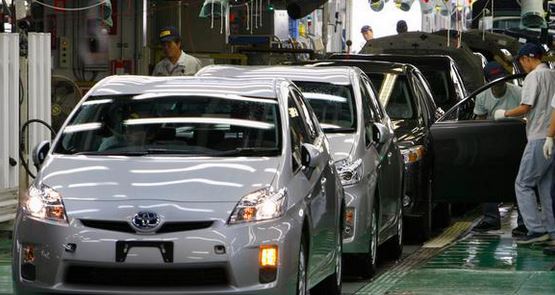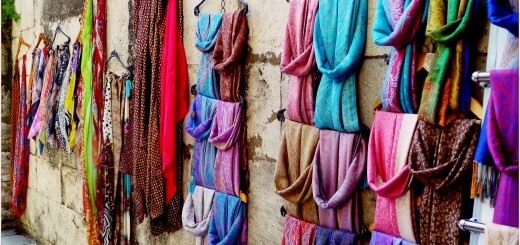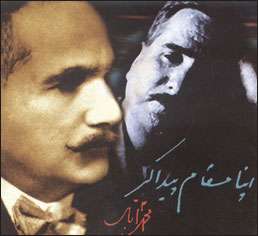Hinopak Motors Pakistan Limited: Cost Accounting Report
Hinopak Motors Pakistan Limited: Cost Accounting Report
HISTORY
Hinopak Motors Pakistan Limited started its operation in the year 1986, after the privatization of Republic motors which was a government owned organization. They are the leading manufacturer of medium and heavy duty commercial vehicles in Pakistan, offers wide range of buses, trucks and special vehicles having a proven track record of reliability and safety.
PARTNERS
Hinopak Motors Ltd. Is a joint venture between Hino Motors Ltd. Japan owns 20% shares, Toyota Tsusho corporation, Japan owns 10% shares and Al-Futtaim industries (PVT) Ltd. UAE owns 59% shares. While the remaining 11% shares are owned by Pakistan public.
PRODUCT LINES
Hinopak has a wide range of products including 4 different categories of trucks along with 3 main categories of buses which are further divided into more sub models. In the truck category it has got a light truck (FB113KA), medium size truck (FF3HKKA), heavy truck (FL3HRKA) and truck tractor (SG3MDKA). In the bus category it has got Roadliner (43 seats), Citiliner (50-65 seats), Metroliner (29 seats), Rapidliner (19 seats).
Hinopak’s continuing success in the Pakistan market has made the “HINO WING” a symbol of quality and reliability, and a prize possession to its owners. Hinopak is the only Pakistani vehicle manufacturer now exporting its buses to the UAE and East Africa.
With continued emphasis on quality assurance, good manufacturing practice and environmental protection Hinopak Motors Limited is in an admirable position to further develop its long term strategy in Pakistan providing high quality products for the ultimate improvement of the general transportation for the Pakistani nation.
DEPARTMENTS
Company is divided into seven departments, each headed by general manager and deputy general manager. These are as follows.
- Costing, Planning and Coordination Department.
- Finance Department.
- Marketing Department.
- Quality Assurance Department.
- Material Operations Department.
- Production Department.
- Personnel & Administration Department.
COST ACCOUNTING SYSTEM
Hinopak motors ltd. uses perpetual cost accumulation system, since most of the materials used in production are expensive and need to be kept track of. At Hinopak motors ltd. both Job order Cost accumulation system as well as Process cost accumulation system are used. Since in the assembly of chassis all the vehicles have to undergo the same procedures, thus Process Costing is used to keep the track of the costs thus incurred. Since, however, a vehicle must undergo different Body Fabrication procedures, therefore for such a case a Job Order Costing is employed, whereby the costs for each job are recorded separately.
ELEMENTS OF COST
Costs are incurred under the traditional heads of Direct Materials, Direct Labour and Factory Overhead. All the costs incurred by the personnel, directly taking part in the Production Process are considered Direct Labour Costs. Production-Line workers such as painters, electricians, welders, etc. fall into this category. The costs incurred for the materials, that can be identified with the finished vehicle are termed as Direct Materials Costs, items such as car paint, steel, Rexene, fabric, glass, petrol, grease, diesel and electrical items are classified as Direct Materials. All the production costs that cannot be directly identified with the finished vehicles are termed as Factory Overhead Costs. FOH costs, apart from indirect costs(that can’t be identified with the finished vehicle) include such costs as utility bills expenditure and factory maintenance costs.
Accounting for Materials
Manufacturing is the process by which raw materials are converted into a finished product. Raw materials constitute an essential cost element of production. Direct materials are those that can be identified with the production of a finished product, that can be easily traced to the product. Indirect materials comprise all the other materials or supplies involved in the production of a product that are not classified as direct materials.
Production is divided into two processes, in the first step it assembles the chassis and in the second step the body is fabricated, which facilitates it to build any sort of a specialised vehicle.
Hinopak motors ltd. has a purchasing department that has the responsibility of ordering materials and supplies for the fabrication of the body. Since, Hinopak motors ltd. is an exporter of motor Vehicles, it takes great care to maintain its high standards of quality. The QAD (quality assurance department) is responsible for meeting the quality standards of materials purchased.
An MIR-materials issuing requisition is sent to the Purchase department when the materials inventory of an item reaches its reorder point, the inventory quantity that triggers a stock replenishment activity. The purchase requisition is based on the purchase orders for a particular type of vehicle as well as the stock level that has to be maintained. This purchase requisition contains information about item needed, quantity required and the name of the job for which the material is being purchased.
As the materials are imported; so it takes some time to reach the materials, therefore, the reorder is set higher so as to avoid the stock-out condition when there is no inventory available to continue production. The stock-out can be very costly for the company because if the production stops, the fixed costs have to be paid while variable costs come to zero.
As the purchase requisition reaches the purchase department, this department asks different suppliers to provide their terms and conditions. The Purchase department decides which supplier should be considered to provide the replenishment stock. Then the purchase department prepares purchase order, a written request to the supplier for specified materials at an agreed upon price.
Later on, the order inventory reaches the company, a materials receiving report (MRR) is prepared by the receiving authority.
The storekeeper has the responsibility for the proper storage, protection, and issuance of the all the materials placed in his custody. The production department sends the materials requisition so the store issues the inventory for the production. Usually, materials requirement are estimated by the production department on the basis of the orders received for the vehicles. The store has to be aware, in advance, of the future materials requirement so that stock-out condition is avoided.
The Hinopak motors ltd. uses perpetual inventory system because it provides better control for the inventory that is required due to the fact that materials for the company is high in cost. The inventory valuation method is First-in-first-out (FIFO). The perpetual inventory record cards are maintained which record purchases and requisitions of specific materials.
Accounting For Labour
Labor is the physical or mental effort expended in the manufacturing a product. Labor cost is the price paid for the using human resources. The compensation paid to employees who engage in production-related activities represents factory labor cost. Direct labor is defined as all labor that is directly involved in the production of a finished product, that can be easily traced to the product. Indirect labor is factory labor that is not directly traceable to a product.
The direct labor at Hinopak motors ltd. is considered as fixed costs since these costs do not vary with the level of production.
The taxes and fringe benefits paid on the payroll consist of the social security tax, gratuity, pension plans, bonuses, medical benefits, worker’s profit participation fund, etc.
There are two shifts at the Hinopak motor company. The overtime rate remain fixed unless ther is a change in the management policies.
They company has a policy to accrue the vacation pay and bonus on periodic basis.
The plant of Hinopak Motor company is capital-intensive so the manufacturing department requires very little labor.
As we study, that prime costs are direct materials and direct labor; but at Hinopak motor co. the direct labor is not the prime component of the product cost. The prime component of product cost, at Hinopak motor co., are direct materials and factory overhead.
Accounting for Factory Overhead
Factory overhead refers to the cost pool used to accumulate all indirect manufacturing costs (excluding selling, general, and administrative expenses because they are non-manufacturing costs). Examples of factory overhead include the following: indirect labor and indirect materials; heat, light, and power for the factory; rent on factory building; depreciation on factory building and factory equipment; and property taxes on factory building. The accounting of fixed over head is done on accrual basis. The manufacturing staff salaries and wages for indirect labor are considered as fixed overhead. The other expenses are insurance, rent, repairs and maintenance, traveling, entertainment and depreciation.
In manufacturing department, the allocation of factory overhead is done on the basis of machine hours.
Forecasting and Budgeting
The forecasting at Merck Marker is basically concerned with the material requirements and sales. The Long-term capacity requirement is also planned as it increases from time to time due to increase in demand. It is extremely important for the production department to determine the size of the batch for a particular product. This is because the Hinopak Motor Co. is manufacturing around 37 products using the same facilities.
The availability of the required materials at all stages of manufacturing is important. The position of warehouse inventory and expected requirements are also carefully worked out.
The inventory control is very important for Hinopak Motor Co.. The materials are very expensive and carrying cost of inventory is high. The materials are imported so it takes time for shipment to arrive; therefore reorder point is set efficiently and optimally high. The carrying unnecessary inventory leads to high carrying cost and loss from depreciation of materials.
Therefore, forecasting and budgeting is given due importance and consideration at Hinopak Motor Co..
Standard Costing
Under standard costing, all costs attached to the products are based on some predetermined standards. Standard costs means the planned costs of a product and are established before the production process actually starts. The establishment of standards provides management with goals to attain and bases for comparison with actual results.
Setting of standards for product cost components is the basis of standard costing. At Hinopak Motors Ltd., standards of direct materials, direct labor and factory overhead are set for departments involved in the production process.
The objective of standard costing are:
Controls of costs
Proper allocation of costs to the product
Determination of the profitability of different products
Standards of Hinopak Motors Ltd. are based on a projection of past performance and future expectations. Under efficient production conditions, standards can be attained.
Direct Materials Standards
Direct materials cost standards are divided into Direct Material Price Standards and Direct Material Efficiency Standards.
Price standards represent the purchase price per unit of direct materials. Since Merck Marker has over 100 products so standard setting is costly in terms of time required for it but it provides better planning and control for the company.
Efficiency standards are predetermined specifications of the amount of direct materials that should go into the manufacturing of a particular product.
Direct Labor Standards
They are divided into direct labor price standards and direct labor efficiency standards.
At Merck Marker, wage rate standards are set for one period based on the job type and expertise required to perform it.
Efficiency standards describes the amount of direct labor that should be used for the production of a product.
Factory Overhead Standards
Factory overhead standards are set for the next period based on factors affecting the overhead costs: rate of inflation, utility charges, technological advances, etc.
For each production department, the budgeted factory overhead expenses are distributed on the basis of normal capacity.
Variance Analysis
The differences between the standards and actual results are called Variance. They are treated separately according to their causes.
Different variances, at Merck Marker, are calculated as follows:
Purchase Price Variance = (Actual Price – Standard Price) x Actual Quantity Purchased of Direct Materials.Materials Variance
Material Usage Variance = (Actual Quantity – Standard Quantity) x Standard Price Per Unit
Material Yield Variance = (Actual Quantity of batch yield – Standard Quantity of batch yield) x Standard Per Unit Cost of batch yield.
Labor Variance
Direct Labor Price Variance = (Actual hourly wage rate – Standard hourly wage rate) x actual number of hours worked
Direct Labor Efficiency Variance = (Actual direct labor hours worked – Standard direct labor hours allowed) x Standard direct labor hourly wage rate
Factory Overhead Variance
Overhead Spending Variance = (Actual FOH – Budgeted FOH at actual Direct Labor hours worked)
Overhead Volume Variance = (Denominator Direct Labor hours – Standard Direct Labor hours allowed) x Standard Fixed FOH application rate
Overhead Efficiency Variance = (Actual direct labor hours worked – Standard direct labor hours allowed) x Standard Variable FOH application rate
With the help of variance analysis, the management can measure the performance of different departments, detect inefficiencies and correct them, place responsibilty of such inefficiencies on responsible departments or persons.














